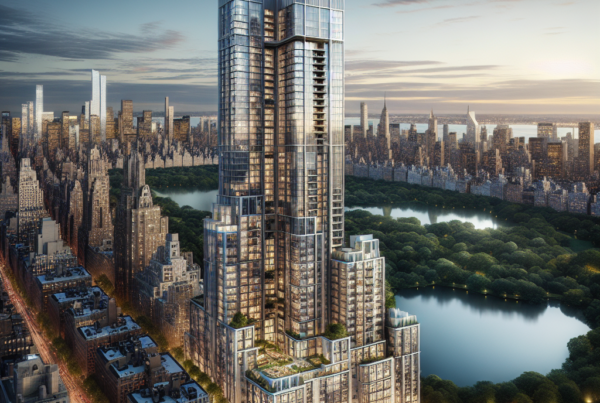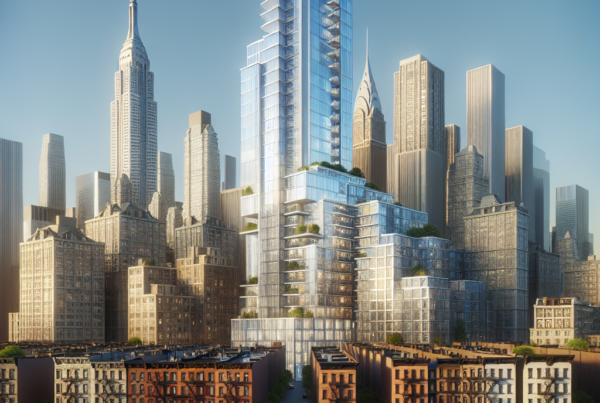Navigating the bustling world of New York City’s real estate market can be quite the adventure. Whether you’re an investor, a potential homebuyer, or just curious about market dynamics, staying updated on the latest trends is crucial. This year brings some fascinating developments worth noting. Let’s dive into the hottest trends shaping NYC real estate right now.
1. Tech-Driven Property Management
Technology is revolutionizing property management in NYC. From smart home devices to AI-driven management systems, property managers are leveraging tech to enhance tenant experiences and streamline operations. This trend is not just about convenience; it’s reshaping the very fabric of property ownership and rental in the city.
Smart home technology like automated lighting, climate control, and security systems are becoming standard in many new developments. These advancements allow property managers to provide enhanced services, like remote monitoring and predictive maintenance, which increases satisfaction among renters. The integration of AI and machine learning in property management systems is allowing for more efficient handling of maintenance requests, lease renewals, and even tenant screening.
Moreover, the pandemic has accelerated the adoption of virtual property tours and digital leasing processes. Prospective tenants can now view properties, sign leases, and handle all necessary paperwork online, streamlining the rental process and reducing the need for in-person interactions. This shift is not only keeping up with the times but also appealing to tech-savvy renters who prioritize convenience and safety.
2. Green Building Initiatives
Sustainability is more than a buzzword in NYC’s real estate market. There is a growing emphasis on green building initiatives, with developers and property owners investing in eco-friendly structures. LEED certifications, energy-efficient appliances, and sustainable materials are becoming standard, reflecting a broader commitment to environmental responsibility.
The city’s commitment to sustainability is evident in the increasing number of buildings attaining LEED certification. This process ensures that buildings meet stringent criteria for energy efficiency, water conservation, and indoor environmental quality. Installing energy-efficient appliances and using sustainable construction materials not only helps the environment but also reduces utility costs, which is a significant selling point for both tenants and buyers.
Additionally, green roofs and urban farming initiatives are gaining traction, providing buildings with recreational spaces while also contributing to the reduction of the urban heat island effect. As New Yorkers become more environmentally conscious, properties prioritizing sustainability are becoming more attractive in the market.
3. Rise of Co-living Spaces
The co-living trend is taking NYC by storm. With rising living costs, more people are opting for shared living spaces that offer affordability coupled with a sense of community. Modern co-living arrangements go beyond mere shared apartments, offering fully-furnished spaces, communal areas, and various amenities designed to foster social interaction.
Co-living spaces are particularly popular among young professionals and millennials who value social connections and experiences over traditional homeownership. These spaces typically offer flexible lease terms, which can appeal to individuals who are new to the city or transitioning between life stages. Amenities like coworking spaces, gyms, and community events are common in co-living developments, promoting a balanced lifestyle conducive to both work and leisure.
The benefits of co-living extend beyond affordability and community. Many co-living companies handle utilities, cleaning services, and maintenance, allowing residents to focus on their personal and professional lives without the usual hassles of renting an apartment. This all-inclusive living model is becoming an attractive option in a city where convenience is highly prized.
4. Micro-Apartments Gain Popularity
As space becomes an increasingly premium commodity, micro-apartments are gaining traction. These compact living spaces are designed to maximize efficiency without compromising on comfort. Ideal for singles and young professionals, micro-apartments offer an affordable entry point into the NYC housing market.
The rise of micro-apartments is driven by the need for affordable living options in a city where real estate prices are high. These units are typically well-designed to make the most of limited space, often featuring multifunctional furniture and smart storage solutions. Despite their smaller size, micro-apartments provide all the essential amenities, making them a practical choice for those who prioritize location and affordability over space.
Developers are recognizing the potential of micro-apartments, with many new projects including units that cater to this growing market segment. The flexibility and lower cost of micro-apartments make them an attractive option, particularly in neighborhoods that are well-connected to public transportation and provide ample social opportunities.
5. Work-from-Home Impact on Housing
The work-from-home trend spurred by the pandemic has significantly influenced housing priorities. Many New Yorkers are seeking homes with dedicated office spaces or flexible room layouts to accommodate their remote work lifestyle. This shift is prompting a re-evaluation of what buyers and renters prioritize in a living space.
With more people working from home, the demand for larger spaces with the potential for a home office has increased. Properties with extra rooms, dedicated office spaces, or versatile layouts are becoming highly sought after. The added requirement for high-speed internet and reliable connectivity has also become a critical consideration for those choosing a new home.
Developers and property managers are responding to this trend by incorporating coworking spaces and business centers within residential buildings. These amenities offer residents a professional environment to work in, reducing the isolation that can come with remote work and fostering a sense of community. As the work-from-home trend continues, these features are likely to become standard in new residential developments.
6. Luxury Market Resurgence
After a period of stagnation, NYC’s luxury real estate market is bouncing back. High-end properties are once again in demand, as affluent buyers seek exclusive amenities, prime locations, and top-notch services. This resurgence is revitalizing some of the city’s most prestigious neighborhoods.
The resurgence in the luxury market can be attributed to several factors, including a pent-up demand from the pandemic, low interest rates, and the desire for more spacious and private living environments. High-net-worth individuals are investing in properties that offer a blend of luxury, convenience, and exclusivity. Modern amenities such as private gyms, spas, wine cellars, and smart home technologies are highly desired features.
Neighborhoods like the Upper East Side, Tribeca, and Central Park South are seeing a surge in interest due to their elite status and the array of high-end properties available. Luxurious penthouses and historic townhouses are particularly attractive to buyers who are looking for significant investments in these storied areas of the city.
7. Emphasis on Health and Wellness
Health and wellness have become key considerations in real estate. Buildings are being designed with features that promote a healthy lifestyle, such as enhanced air filtration systems, fitness centers, and ample outdoor spaces. The focus on wellness is driving a new wave of development centered around holistic living environments.
The emphasis on health and wellness is partly a response to the COVID-19 pandemic, which underscored the importance of healthy living environments. Developers are incorporating features such as UV air purification systems, touchless entry points, and outdoor recreation areas to enhance residents’ well-being. These additions are not only improving the quality of life but are also becoming key selling points in the competitive NYC market.
Additionally, buildings are adding wellness amenities like yoga studios, meditation rooms, and nutrition-focused dining options. These features cater to the growing number of residents who prioritize mental and physical health, ensuring that their living spaces contribute positively to their overall well-being. This trend towards health-centric living environments is likely to continue as residents seek out properties that offer more than just a place to live.







